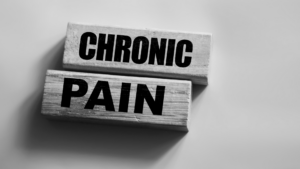Various conditions, diseases, deformities, or injuries cause foot pain. Medications are a common approach to getting relief, but many options don’t involve pills or taking medicine.
Causes of Foot Pain
Diseases, viruses, fungi, and bacteria can cause foot pain, but one of the most common causes of foot pain is arthritis. Pain in the feet is associated with overuse of ligaments or nerve injuries. These are some other common causes for foot pain:

Foot Pain Causes, Home Remedies, and Treatments
- Ingrown toenail
- Plantar warts
- Athlete’s foot
- Diabetes
- Systemic diseases – such as lupus, gout, and rheumatoid arthritis
- Ill-fitting shoes or high heels
- Tendonitis
- Bone Spurs
If you experience foot pain, seeing a specialist is best. Delaying treatment can result in complications, chronic pain, or long-term disabilities.
How To Alleviate Foot Pain
OTC pain relievers can help inflammation and pain, but always consult your doctor before taking anything for your foot pain. Instead, treat yourself with at-home remedies to help minimize the pain.
RICE Method
Rest, ice, compression, and elevation.
If your foot pain is due to injury or overuse, resting it is one of the best ways to help lessen the pain. Rest will allow the tissues to heal and give your body time to process the injury. Ice should not be used for more than 20 minutes at a time. Wrap ice in a towel or plastic bag so it is not too cold on your skin.
Both compression and elevation help prevent swelling of the painful or injured area. Swelling can cause nerve fibers to stretch, causing more pain. Decreasing swelling often provides some degree of pain relief.
Foot Massage
Massages improve circulation, reduce tension, and can help alleviate pain. If you have foot pain, this is a good way to examine your feet, see if the pain worsens, and notice a problem before it worsens.
Trying a hydromassage is another way to help relieve pain. To do this, fill one large bowl or basin with cold water, and another with hot water. Place both feet in the cold water for 5 minutes, then moving to the hot water. Alternate every 5 minutes.
If your pain lasts longer than 5 days (with home treatments) and does not improve after a few weeks, schedule an appointment with a medical professional. Use the form below to get in touch with one the team at Progressive Pain Management.
Nerve blocks are a common form of therapy used to treat and manage chronic pain. Groups of nerves that cause pain to a particular region or area of the body can typically be blocked via injections of medication also known as nerve blocks. These nerve blocks are numbing substances that numb the nerves signaling a patient’s pain.

Nerve Block Injections for Chronic Pain Management
Four Categories Of Nerve Blocks for Chronic Pain
Nerve blocks are typically categorized into four main categories. These four nerve block categories include: therapeutic, diagnostic, prognostic, and pre-emptive.
- Therapeutic nerve blocks are used to treat chronic pain and various pain conditions. These nerve blocks typically contain local anesthetic which can be used to treat acute pain. Studies have shown these nerve blocks effectively improve the quality of life for patients with chronic pain.
- Diagnostic nerve blocks are issued to identify the source of a patient’s pain. These blocks contain a lower level anesthetic that provides a duration of pain relief.
- Prognostic nerve blocks identify the prognosis of certain treatments. For example, a prognostic nerve block may be issued to determine if a permanent solution, such as surgery, would be a more successful route to alleviate the patient’s pain.
- Preemptive nerve blocks are unique in that they are used to prevent subsequent pain often seen as the results of a procedure. This includes symptoms such as phantom limb pain.
Nerve blocks are also broken down into more specific categories based on the type of pain or location of pain that the patient is experiencing. These specific nerve blocks are sympathetic, stellate ganglion, and facet joint blocks.
- Sympathetic nerve blocks are performed to determine if there is existing damage to the sympathetic nerve chain. This includes a network of nerves that run the entire length of the spine and are responsible for controlling the body’s involuntary functions.
- Stellate ganglion blocks are a type of sympathetic block that are also used to identify damage to the sympathetic nerves. However, stellate ganglion blocks are used more specifically to identify nerve damage to the head, neck, chest, and arms.
- Facet joint blocks are conducted in the facet joints of the spine and are also known as zygapophysial blocks. These are used to determine whether a facet joint is the cause of pain.
Nerve Blocks by Location
Nerve blocks can be injected in various areas depending on the cause and location of a patient’s pain. Some of the most common nerve blocks by anatomical location include…
- Trigeminal nerve blocks for Trigeminal Neuralgia (face)
- Subarachnoid and Celiac nerve blocks (abdomen and pelvis)
- Supraorbital nerve blocks (forehead)
- Cervical, Thoracic, and Lumbar epidurals (neck and back)
- Maxillary nerve block (jaw)
Side Effects of Nerve Blocks
While studies have shown that nerve blocks can be highly effective in treating chronic pain, side effects are always possible. Everyone’s body reacts differently to medical treatments, but common side effects may include soreness at the injection site, rash, itching, bleeding, elevated blood sugars, and extra energy. While this may not happen to everyone, it is important to contact your doctor if you begin experiencing side effects outside of what is considered normal or if you’re experiencing anything causing concern.
Nerve blocks are specifically for patients with nerve damage or neurological conditions such as Trigeminal Neuralgia or chronic back pain. Patients who do not have nerve damage may not see the results from nerve blocks. However, patients experiencing chronic pain from nerve damage can benefit greatly from nerve blocks. Be sure to talk with your doctor if you think that nerve blocks may be the best option to treat your chronic pain.
The team of Progressive Pain Management specialists help treat various conditions that can benefit from these types of nerve blocks. Fill out the form below to get started.
Chronic pain is primarily one of the prevalent conditions affecting approximately 1 in 5 adults in the U.S. A substantial number of these patients experience chronic neuropathic pain. Also, another research shows that neuropathic pain affects more women than men, with a pain frequency rate of 8% and 5.7%, respectively, in persons above 50 years. Even with this high rate of occurrence, many do not understand what it is and the treatment procedures. It has been referred to as a “hidden epidemic” due to its unpredictable nature.
Fortunately, intense neuropathic pain does not always indicate a life-threatening condition. Some people with neuropathy might have relatively minor and manageable symptoms with conservative treatment like medication or physical therapy. Here is all you need to know about different types of neuropathic pain and their treatment.

Neuropathic Pain and Treatment Options
What is Neuropathic Pain?
Neuropathic pain is caused by peripheral or spinal nerve damage that transfers information between the brain and spinal cord from the skin, muscles, and other body parts. The pain is usually described as shooting, burning, tingling, numbness, and pins and needles.
Despite having complex symptoms, lesions or diseases of the somatosensory system are major causes of neuropathic pain. It is often resistant and can be very intense. Other causes include:
- Alcoholism
- Cancer and cancer treatments
- Viral infections
- Diabetes
- Trauma or surgeries which damage the nerves
- Vascular malformations
- Shingles
Types of Neuropathic Pain
The different types of neuropathic pain vary with body parts and nerves affected. When one nerve is affected, it is called mononeuropathy, while damage on more than one nerve is called polyneuropathy. The different types of neuropathic pain and the body parts they affect include;
Peripheral Neuropathy
Peripheral neuropathy is a nervous disorder affecting your hands, feet, toes, arms, and legs. Often, people with peripheral neuropathy experience weakness in their muscles and reduced sensitivity in their skin.
PN differs from other nerve damage forms because it simultaneously affects multiple peripheral nerves. Even if one body part can send signals to the brain, another factor may be unfunctional.
Autonomic Neuropathy
Autonomic neuropathy is a condition that damages the autonomic nervous system. Often the damage is episodic and intermittent. This causes an inconsistent negative effect on the spinal cord signals. Problems with this system will lead to dry eyes, uncontrolled reflexes, and bladder function difficulty.
Focal Neuropathy
Focal neuropathy is a neurological disorder affecting one or more body parts. It is mainly caused by trauma or infection and affects muscles in an area close to the damaged nerve.
When you suffer from focal neuropathy, it is common for you to experience numbness, tingling, burning sensations, and even pain near the affected site. If you experience these symptoms and are unsure what they mean, visit an ophthalmologist or neurologist to find out more.
Proximal Neuropathy
Proximal neuropathy is a condition in which people cannot feel their extremities. This nerve damage causes people to experience numbness, tingling, or feelings of pins and needles beginning in the fingers or hand. In addition to difficulties with walking, performing daily living and self-care activities may be hindered by this disorder.
Diabetic Neuropathy
Diabetic neuropathy is a diabetic condition resulting in nerve damage. This nerve damage can happen in any part of your body, but the most affected parts are the feet. The symptoms can start as mild and unnoticed but will progress in severity over time. People with DN usually have issues with mobility.
How is Neuropathic Pain Treated?
Most types of neuropathic pain will ease with time. However, physicians can suggest transcutaneous electrical nerve stimulation (TENS) therapy for chronic neuropathic conditions.
Other treatment options include pain relief medication, and, in some cases, surgery is necessary. Additionally, here is an outline of the most common treatments;
- Anti-epileptics
- Anti-depressants
- Acupuncture
Working with a neuropathic pain specialist offers a permanent treatment plan that does not involve surgery or medication.
Take Action Now and Start Living Again
Don’t let chronic neuropathic pain define or affect your quality of life. Maybe until now, your options have been surgery or the use of medications. Luckily, Progressive Pain Management offers treatments for neurological and chronic pain conditions. A physician evaluates your condition, conducts lab tests, and creates a treatment plan per your unique condition. Contact us to learn more about neuropathic pain and treatment offerings. We will help provide an effective treatment option for you. Fill out the form below to get started.
Chronic pain is classified as a pain or discomfort that is ongoing and lasts three months or longer. It is typically caused by an underlying chronic condition, although not always. Unlike pain from pulling a muscle or stubbing your toe that goes away after the injury is healed, chronic pain can last years if not managed by a physician.
This type of pain is not always constant, but it does disrupt daily life by preventing patients from doing what they love.

Things to Know About Chronic Pain
What Causes Chronic Pain
For many people, chronic pain begins after an injury or trauma. Other times, it can begin without an obvious cause. Some of the most common causes of chronic pain are:
-
- Previous surgeries or injuries – Old injuries can cause nerve damage because they either were not treated properly the first time or they healed incorrectly.
- Back problems – There are a variety of back conditions that contribute to chronic pain, such as SI Joint Pain, herniated discs, deterioration of the spinal column, spinal cord compression, and many others.
- Migraines or other types of headaches – While chronic headaches are difficult to diagnose, common causes are inflammation, blood pressure issues, stress, or hormone changes in women.
- Arthritis – Arthritis is one of the most common causes of chronic pain and can cause limb deformities, loss of range of motion, stiffness, and inflammation.
- Nerve damage – An injury, accident, or infection can cause chronic nerve pain (neuropathic pain). When nerves are damaged, they are unable to function properly and that oftentimes leads in a loss of communication between body parts and the brain.
- Fibromyalgia – Fibromyalgia is a musculoskeletal condition that causes widespread muscle pain throughout the body. Studies show that this condition worsens pain by affecting the way your brain processes these signals.
How Does Chronic Pain Affect My Body?
When pain is experienced for a long amount of time, your nociceptors go into overdrive and become more sensitive to pain. They produce lower level signals, making you feel more pain than you are actually experiencing. This is problematic because your body is likely not harmed, but your pain receptors exaggerate the pain.
When an injury or trauma occurs, the area’s pain sensors (nociceptors) are “turned on.” They send an electrical current that travels along the nervous system until it reaches the brain. Your brain understands that signal and sends the message that you are hurt. In chronic pain patients, the nerves continue sending the pain signals to the brain, even after the injury is healed.
Why Are Narcotics Bad for Chronic Pain?
Narcotics, in chronic pain patients, create a cyclical relationship and dependency. At first, these drugs may relieve pain by attaching themselves to your brain’s endorphin receptors. However, after any length of time, the receptors become dependent on the medication’s effect. The brain limits the amount of endorphins it produces, reducing the body’s natural painkillers. Without natural endorphins, narcotics have to be taken to maintain a level of comfort.
This causes problems when the patient is no longer prescribed these medications from a physician, because their body has become dependent on the narcotics’ effect on the brain. Your brain and body need that chemical to function regularly. Stopping or lowering the dose can cause your body to react poorly, including nausea, shakes, headaches, and other serious problems.
Available Treatment Options
Treatment for chronic pain will depend on your pain’s severity and your physician’s diagnosis. The root cause of the pain will also determine the treatment plan your physician designs.
Medications for Chronic Pain
Medication can be helpful to patients who suffer from chronic pain. Over-the-counter pain relievers such as acetaminophen (Tylenol) or NSAIDs like aspirin and ibuprofen are useful in reducing inflammation and stiffness that worsens chronic pain.
Physicians do not recommend opioids due to the aforementioned risk of dependency and danger of abuse.
Analgesics such as antidepressants and anticonvulsants are useful in chronic pain that is caused by nerve-related disorders. This includes pinched nerves, sciatica, and herniated discs.
Procedures for Chronic Pain
If the chronic pain worsens and other pain relief methods have not been successful, your physician may recommend a medical procedure.
Some examples include:
- Electrical stimulation
- Nerve block injections
- Acupuncture
- Facet joint injection
- DRG therapy
- Spinal cord stimulation
There is no cure for chronic pain, but when managed effectively, patients can live their lives relatively pain-free and comfortably.
Under a pain management specialists’ supervision, it is recommended that patients who are looking to reduce chronic pain make lifestyle changes in order to promote health and wellbeing. This includes being active, incorporating low-impact cardio into their daily routine, eating a healthy diet, and getting enough sleep.
Learn more about pain management and how the team at Progressive Pain Management work with their patients to create a personalized pain management plan that works best with their lifestyle and needs.
Fill out the form below to get started today.

